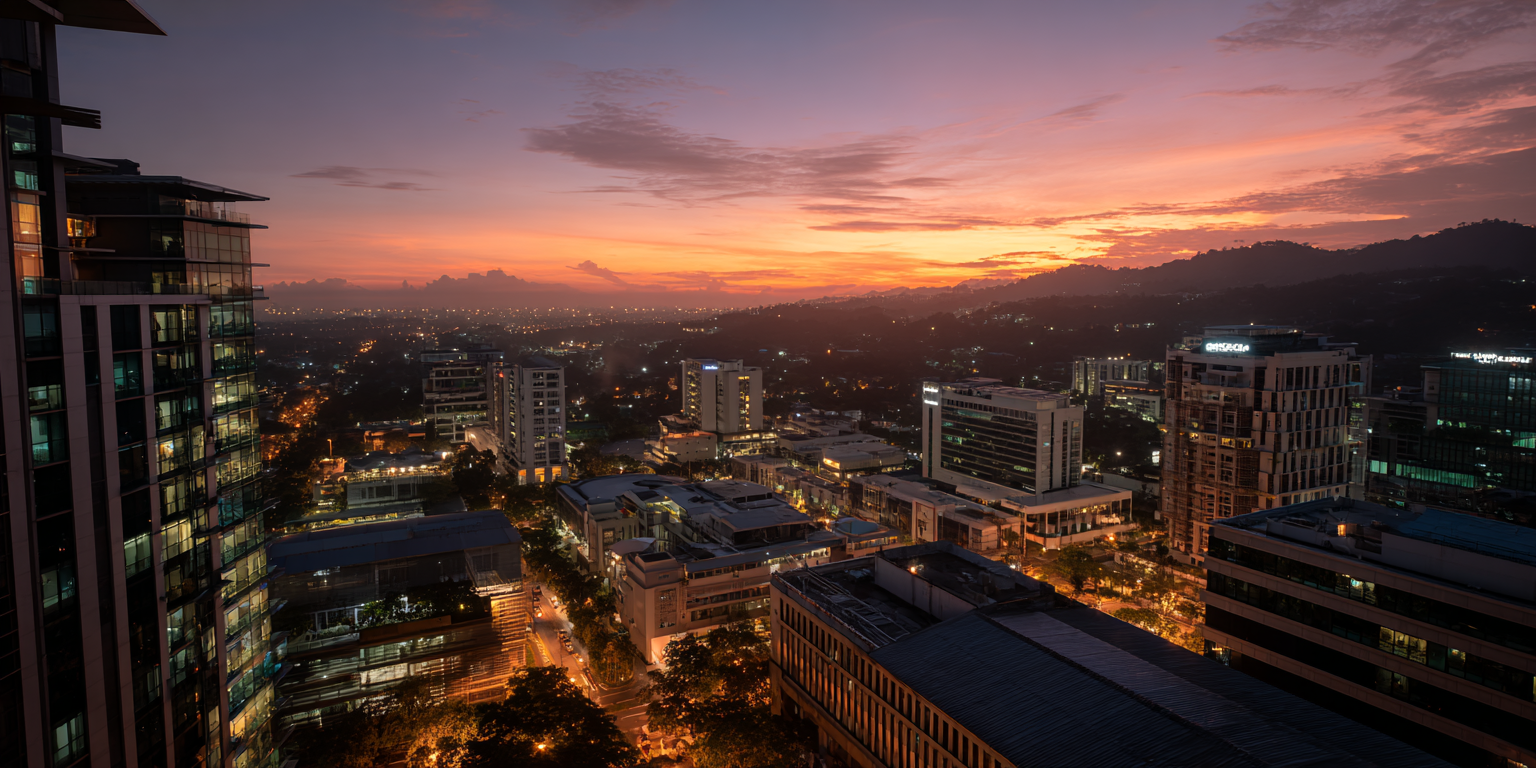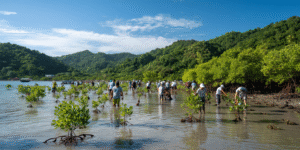The Queen City’s Real Rhythm
Most people picture the Philippines and see serene beaches or the chaotic energy of Manila. But what if you could have both? More than 80% of the country’s domestic shipping fleet is headquartered in Cebu, a statistic that points to its true identity: a powerful economic and logistical hub that just happens to be surrounded by world-class islands. I came here looking for a base, a place that could support my work life while satisfying a deep craving for adventure. What I discovered while living in Cebu as a digital nomad was a city with a rhythm all its own, a place that rewards patience and curiosity in equal measure.
My journey started, like many, at the Mactan-Cebu International Airport (CEB), an architectural beauty that feels more like a resort than a terminal. It’s a gentle introduction to the Philippines. I took a pre-booked Grab car (the Southeast Asian ride-hailing equivalent of Uber) for about 400 PHP (~$7 USD) to my temporary home, a one-bedroom Airbnb in the Cebu IT Park. This initial step was strategic. The IT Park is a designated Special Economic Zone, a modern enclave of glass towers, condos, and 24/7 restaurants. It’s a bubble, for sure, but an incredibly convenient one for settling in. The Wi-Fi is stable, cafes with outlets are plentiful, and everything you need is walkable, which is a blessing I’d come to appreciate deeply.
Setting Up a Life Between Canyons and Cafes
After a week, the task was to find a more permanent base. I spent my days exploring two main avenues for this: co-working spaces and long-term apartments. While my condo’s internet was decent, I thrive on the energy of a shared workspace. I checked out The Company Cebu in the IT Park, which offered hot desks for around 6,000 PHP (~$105 USD) a month. The atmosphere was professional, quiet, and filled with a mix of local freelancers and international remote workers. But I also fell for the charm of working from local coffee shops like Bo’s Coffee, a Cebuano-born chain that champions Philippine-grown beans. A large Americano for 140 PHP (~$2.50 USD) could buy me a few productive hours.
Finding an apartment outside the Airbnb ecosystem required some local know-how. Facebook Marketplace and dedicated local groups are where the best deals are found. I eventually landed a one-bedroom, furnished unit in Lahug, a neighborhood bordering the IT Park, for 22,000 PHP (~$375 USD) per month, plus utilities. This location gave me the perfect balance: a quieter, more residential feel while still being a 10-minute walk from work-friendly cafes. The real joy of living in Cebu as a digital nomad Philippines style is how weekends can completely erase the work week. One Saturday, I’d be on a bus heading south to Moalboal to snorkel the famous sardine run. The next, I’d be exploring the misty mountains of Busay, visiting the Temple of Leah and enjoying panoramic city views.
Beyond the Wi-Fi: Finding a Connection
True cultural immersion in the Philippines happens in the small, everyday moments. It’s in learning a few words of the local language, Cebuano (or Bisaya). A simple “Salamat kaayo” (Thank you very much) or “Maayong buntag” (Good morning) was always met with a wide, genuine smile. I made a habit of eating at the local carenderias, small family-run eateries, where a full meal of rice, a vegetable dish, and some grilled pork could cost as little as 150 PHP (~$2.60 USD). Here, I didn’t just eat; I listened to the local dialect, watched families interact, and felt the pulse of the neighborhood.
One of my most memorable experiences was a visit to the Carbon Market, the oldest and largest farmer’s market in the city. It’s a beautiful chaos of vendors selling everything from fresh seafood and exotic fruits to handmade baskets. It’s gritty, loud, and utterly authentic. This is where you see the city’s heart, unfiltered. I also made a point to understand the deep-rooted faith of Cebuanos by visiting the Basilica Minore del Santo Niño de Cebú. Seeing the devotion of the people there provided a profound context that no travel guide could fully capture.
The Highs and the Honest Lows
Let’s be clear: living in Cebu as a digital nomad is not a flawless vacation. The biggest challenge is, unsurprisingly, infrastructure. While my condo had fiber internet, power outages (called ‘brownouts’) can happen. My solution was a power bank for my laptop and a Globe mobile data plan on my phone as a backup to my Converge home internet. The second challenge is the traffic. Getting across Cebu City during rush hour can be an exercise in extreme patience. This is why motorbike taxis like Angkas and JoyRide are not just convenient; they are essential. They cut through traffic and are significantly cheaper than cars.
But the highlights far outweigh the hurdles. The sheer accessibility of adventure is Cebu’s superpower. You can be stressed over a deadline in a high-rise office at 10 AM and be on a boat to a white-sand island by 2 PM. The cost of living allows for a quality of life that would be difficult to achieve back home. Most importantly, it’s the warmth of the people. The local culture is incredibly welcoming, and there’s a strong, supportive community of both locals and fellow nomads if you put in the effort to find them.
A Strategist’s Guide to Cebu
- Visas: Many nationalities get a 30-day visa-free entry. Extending is a straightforward, if bureaucratic, process at the Bureau of Immigration office in Mandaue City. Plan for a half-day affair.
- Best Time to Settle: Arrive during the dry season, from December to May. January is electric with the Sinulog Festival, but also crowded and expensive. The shoulder months of November or June offer a good balance.
- Money: While cards are accepted in malls and hotels, the Philippines is still a cash-heavy society. Always have enough PHP for taxis, small shops, and market trips. ATMs are widespread, but using a service like Wise can reduce conversion fees.
- Getting Around: Download Grab (for cars and food delivery) and Angkas/JoyRide (for motorbike taxis) immediately. For a true local experience, try a jeepney—just be sure to ask a local for the correct route.
My time in Cebu was a lesson in contrasts: modern efficiency and island-time patience, urban grit and pristine nature, deep-rooted tradition and a forward-looking mindset. It’s a city that doesn’t just offer a place to plug in your laptop; it invites you into its complex, vibrant, and deeply human story. Living in Cebu as a digital nomad isn’t about finding a perfect paradise. It’s about finding a rhythm that works for you, a place where the reward for navigating the challenges is a richer, more profound connection to the world around you.




